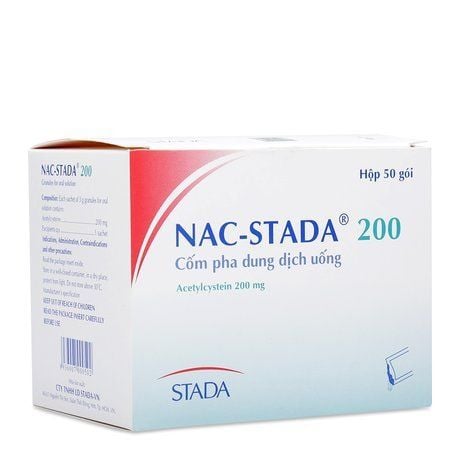This is an automatically translated article.
Chronic pain is generally defined as any pain that lasts more than 12 weeks. Conditions such as migraine, osteoporosis, arthritis, and other musculoskeletal conditions are well-established chronic diseases. This article will help you better understand the causes and solutions for this condition.1. From acute pain to chronic pain
While acute pain often alerts us to an injury, chronic pain is pain that persists, often for months or even longer. Acute pain can turn into chronic pain if it is left untreated or poorly treated.This occurs when nerve cell changes occur in the nervous system, making the body more sensitive to pain and can produce pain sensations even in the absence of an external painful stimulus. For example, people may feel pain from a gentle breeze or clothing touching their skin. However, there are other chronic pain conditions that may not be as common or well known. These include conditions associated with neuralgia, pelvic pain, abdominal pain, facial pain, and persistent pain after surgery.
The longer pain goes untreated, the more the body is at risk of becoming sensitive to pain and the pain becoming chronic. Therefore, prompt and effective treatment of acute pain is essential to prevent the transition to chronic pain.
2. What is chronic pain?
Each of us still experiences pain from time to time. In fact, sudden pain is an important nervous system response that helps alert us to possible injury or danger. When an injury occurs, pain signals travel from the injured area up the spinal cord and to the brain.Pain is usually less severe as the wound heals. However, chronic pain is different from typical pain. With chronic pain, our bodies continue to send pain signals to the brain, even after the wound has healed. This can last from a few weeks to years. Chronic pain can limit our mobility and reduce flexibility, strength, and endurance. This can make it difficult to complete daily tasks and activities.
Chronic pain is defined as pain lasting at least 12 weeks. The pain may be felt acute or dull, causing a sensation of heat or soreness in the affected areas. It can be steady or intermittent, coming and going without any apparent reason. Chronic pain can occur in nearly any part of the body. The sensation of pain may vary in different affected areas. Some of the most common types of chronic pain include:
Headaches. Pain after surgery. Pain after trauma. Lower back pain. Cancer pain. Athritis . Neuropathic pain (pain caused by nerve damage). Pain is psychological (pain that is not caused by disease, trauma, or nerve damage). According to the American Institute of Pain Medicine, more than 1.5 billion people worldwide are living with chronic pain. It is the most common cause of long-term disability in the United States, affecting approximately 100 million people.

Đau mạn tính là cơn đau dai dẳng, kéo dài ít nhất 12 tuần
3. Causes and risk factors of chronic pain
3.1. Causes of Chronic Pain Chronic pain is often caused by an initial injury, such as a back sprain or a pulled muscle. It is believed that chronic pain develops after nerve damage. Nerve damage makes the pain more intense and lasts longer. In these cases, treating the underlying wound may not resolve the chronic pain.However, in some cases, people have chronic pain without any prior damage. The exact cause of chronic pain without trauma is still unknown to scientists. Sometimes, the pain can be due to an underlying health condition, such as:
Chronic Fatigue Syndrome : Characterized by prolonged, extreme fatigue, often accompanied by pain. Endometriosis: A painful disorder that occurs when the lining of the uterus grows on the outside of a woman's uterus. Fibromyalgia: Pain that spreads to bones and muscles. Inflammatory bowel disease: A group of conditions that cause painful, chronic inflammation in the digestive tract. Interstitial cystitis: A chronic disorder marked by increased bladder pressure leading to episodes of pain. Temporomandibular joint (TMJ) dysfunction: A condition that causes pain when clicking, popping, or locking the jaw. Vulva: Chronic vulvar pain occurs without an obvious cause. 3.2. Risk factors for chronic pain Chronic pain can affect people of all ages, but it is most common in older adults. Besides age, other factors that can increase your risk of developing chronic pain include:
Having an injury. Go through surgery. Female gender. Overweight or obese.
4. Chronic pain treatment
The main goals of treatment are to relieve pain and improve mobility. This allows the patient to return to their usual activities without discomfort. The severity and frequency of chronic pain can vary between individuals. Therefore, doctors will provide individual pain management plans. Your pain management plan will depend on your symptoms and any underlying health conditions. Medical treatments, lifestyle remedies, or a combination of these can be used to treat chronic pain.
Chấn thương có thể là yếu tố khiến cơn đau trở thành mạn tính
5. Chronic pain medicine
Several medications are available that can help treat chronic pain. Doctors may prescribe some of the following:Over-the-counter pain relievers, including acetaminophen (Tylenol) or nonsteroidal anti-inflammatory drugs (NSAIDs) such as aspirin (Bufferin) or ibuprofen (Advil). Opioid pain relievers, including morphine (MS Contin), codeine, and hydrocodone (Tussigon) Adjunctive pain relievers, such as antidepressants and anticonvulsants.
6. Medical procedures for chronic pain
Certain medical procedures can also help relieve chronic pain. Includes:Electrical stimulation, which relieves pain by delivering mild electric shocks to the patient's muscles. Nerve block, which is an injection that stops nerves from sending pain signals to the patient's brain. Acupuncture: Long proven and used in pain relief. Surgery, correcting wounds that may not have healed properly lead to pain.
7. Lifestyle measures for chronic pain
In addition, there are various lifestyle changes to help relieve chronic pain. Examples of these measures include:Physical therapy. Tai chi. Yoga . Art and music therapy. Pet therapy. Psychotherapy. Massage . Meditation .
8. Coping With Chronic Pain
Currently, there is no cure for chronic pain, but the condition can be successfully managed. It is important to follow a pain management plan to help relieve symptoms.Physical pain is related to emotions, so chronic pain can increase a person's stress levels. Building skills for emotional balance can help people deal with any stress related to their chronic pain. Here are some steps you can take to reduce stress:
Take good care of your body: Eating right, getting enough sleep, and exercising regularly can help keep your body healthy and reduce feelings of stress. straight. Continue to participate in normal daily activities: You can improve your mood and reduce stress by participating in activities you enjoy and socializing with friends. Chronic pain can make it difficult to perform certain tasks, but isolating ourselves can lead to a more negative view of the condition and increased sensitivity to pain. Seek support: Friends, family, and support groups can help and provide comfort during a difficult time. When we're not feeling well, managing chronic pain can be difficult. Emotional stress can make the pain even worse. Therefore, balancing emotions as well as limiting stress can indirectly help patients manage pain. Patients need to take good care of their bodies, actively participate in daily activities and most importantly, do not be afraid to receive help from friends or family members.

Tập yoga là một trong những phương pháp giúp cải thiện cơn đau mạn tính
Pain management methods at Vinmec include:
Spinal plane anesthesia (ESP) provides a painless surgical experience for heart surgery patients and many other surgeries.
Back anesthesia (also known as epidural) to reduce pain during labor during normal delivery. This method allows labor to take place in the most ideal conditions.
Anesthesia method of lumbar squamous muscle for pregnant women giving birth by caesarean section. The mother is given spinal anesthesia during surgery and pain relief in the first day after surgery by means of lumbar squamous sphincter, helps the mother take care of the baby and recover better.
Program to enhance recovery after surgery ERAS : Program to enhance recovery after surgery (ERAS) is a collection of perioperative multimodal care protocols (before, during, after surgery) to help Patients recover quickly and soon after surgery. Thanks to the robotic surgery technique combined with the program to enhance recovery after surgery, it is possible to shorten the postoperative treatment time from 10 days to 3 days.
Chronic pain does not have an optimal treatment, but it can be limited so that the patient feels more comfortable and integrates into life, minimizing the possibility of the disease affecting the patient's quality of life.
Please dial HOTLINE for more information or register for an appointment HERE. Download MyVinmec app to make appointments faster and to manage your bookings easily.
Reference articles: healthline.com, webmd.com












